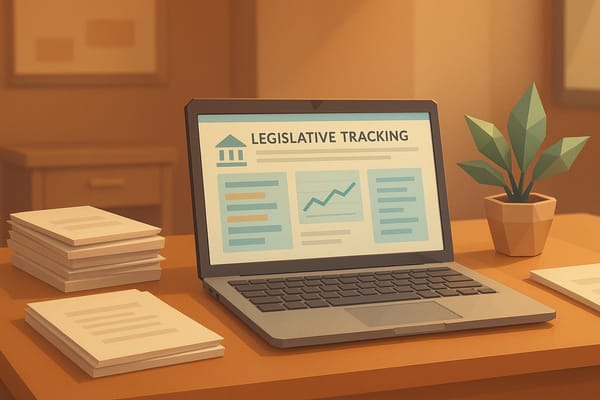New Bill Targets Bump Stock Usage

The recent introduction of HB51 is aimed at regulating the use of bump stocks in Class 1 municipalities. As gun control remains a contentious topic across the nation, this bill is designed to enhance public safety by banning a device that can enhance the firing rate of semiautomatic firearms. As mass shootings have influenced public perception and policy, the implications of this bill extend beyond legislation—they reflect a societal response to the pressing need for improved gun control measures.
In this blog post, we will discuss the core elements of the bill, the definitions within the legislation, the penalties established for violations, the exemption clauses, and the timeline for the bill's effectiveness.
Overview of HB51
HB51, introduced by Representative Givan, aims to prohibit the possession of bump stocks specifically within Class 1 municipalities in Alabama. The bill has passed its initial readings and is set to be reviewed by the Public Safety and Homeland Security committee. This initiative arises in the context of national discussions surrounding gun control and the functionality of bump stocks, which allow semiautomatic weapons to fire more like automatic weapons, increasing the fire rate and potential danger.
Defining Bump Stocks
Section 1 of HB51 provides a stringent definition of what constitutes a bump stock. According to the bill, a bump stock is any part or device that can be attached to a firearm, using the recoil energy from firing to cause repeated trigger activation. "No person may possess, obtain, receive, sell, or use a bump stock within a Class 1 municipality," as explicitly stated in the bill. This clear definition helps mitigate ambiguity regarding what is banned under the new law.
Criminal Penalties for Violations
One of the most compelling elements of HB51 is the enforcement aspect through criminal penalties. Violating the prohibition on bump stocks within the designated municipalities results in a Class C felony. This classification highlights the seriousness with which the legislature is treating this issue. This severe consequence aims to deter individuals from circumventing the ban and to promote compliance among gun owners.
Exemptions for Law Enforcement
Interestingly, the legislation includes a clause that exempts state and local law enforcement officers from the ban while acting in an official capacity. This provision is crucial as it ensures that law enforcement has the necessary tools to carry out their functions effectively without legal hindrances. The dual-purpose nature of policy ensures that while civilian populations are safer, law enforcement capabilities are not unduly restricted.
Timeline for Implementation
The act is set to become effective on October 1, 2025, giving gun owners and advocates time to adjust to the new regulations. This timeline may also allow for public awareness campaigns to educate affected residents about the law and its implications. Understanding the route from proposal to enactment can provide insight into how legislators handle sensitive topics like gun control.
Public Response and Implications
With gun rights advocates often opposing tightening regulations, the HB51 bill has sparked discussion surrounding individual rights versus public safety. While supporters herald this bill as a necessary measure to prevent firearm-related accidents and enhance community safety, detractors argue that it may infringe upon lawful gun ownership rights. Such debates are vital for the legislative process and forecast the challenges that the bill may face as it moves forward.
Key Takeaways from HB51
As this legislation progresses, its potential ramifications will be closely monitored by lawmakers, citizens, and advocacy groups alike. The ongoing discussion surrounding gun control reform emphasizes the importance of balancing safety measures with individual rights. Ultimately, the success of this bill will hinge on its acceptance by the public and its effectiveness in enhancing community security.




